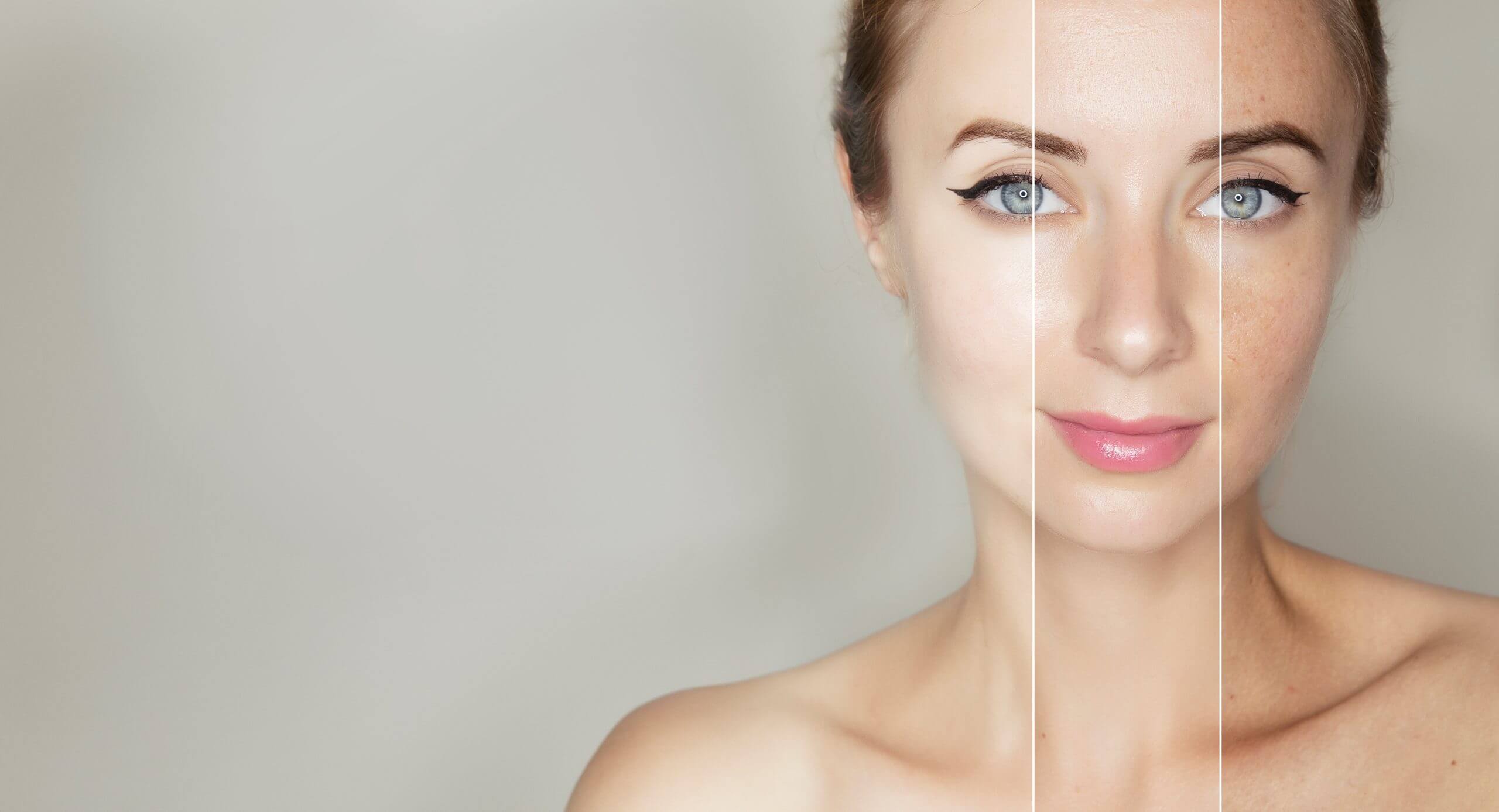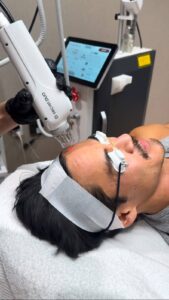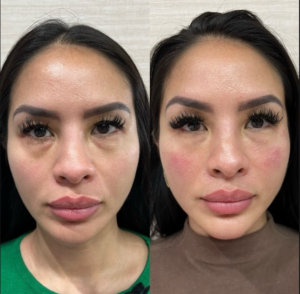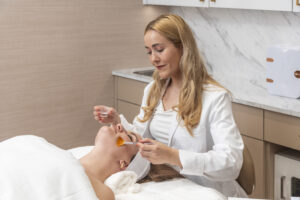Sun protection is crucial for maintaining healthy skin and preventing long-term damage caused by harmful UV radiation. While many people know the importance of sunscreen, it is essential to recognize that different skin tones have varying levels of natural protection against the sun’s rays. In this blog, we will scour the significance of sun protection for individuals with brown and red skin tones, exploring their unique needs and providing valuable insights on how they should approach sunscreen use.
Understanding the Impact of Skin Tone on Sun Sensitivity
The amount and type of melanin primarily determine skin tone. Melanin is the pigment responsible for skin color, hair, and eyes. Darker skin tones like brown and red have higher melanin levels than lighter skin tones. While melanin provides some natural protection against UV radiation, it does not make individuals immune to sun damage.
Contrary to popular belief, individuals with darker skin tones are still susceptible to the harmful effects of the sun. The higher melanin levels in brown and red skin provide some inherent protection, but it does not eliminate the need for sunscreen. Moreover, the misconception that darker skin tones do not require sunscreen can lead to complacency and increased risk of sun damage and skin cancer.
It is essential to highlight that individuals with brown and red skin tones have an increased risk of developing skin cancer compared to those with lighter skin tones. Although skin cancer is less expected in individuals with darker skin, when it does occur, it is often diagnosed at a more advanced stage, resulting in poorer outcomes. Therefore, understanding the importance of sun protection and adopting preventive measures is crucial for everyone, regardless of skin tone.
The Importance of Sunscreen for Browns and Reds
One common misconception is that dark skin tones do not require sunscreen. While it is true that darker skin tones have a higher natural SPF, they are still susceptible to the damaging effects of the sun. Sun exposure can lead to hyperpigmentation and uneven skin tone and worsen skin conditions such as melasma.
Additionally, individuals with red-toned skin, such as those with fair skin or conditions like rosacea, are more prone to sunburns and skin irritation. Sunburns can be painful and may increase the risk of long-term skin damage, including premature aging.
Using sunscreen daily is essential for individuals with brown and red skin tones. It acts as a protective barrier, preventing UV radiation from penetrating the skin and causing harm. By incorporating sunscreen into their skincare routine, individuals can minimize the risk of sun damage, maintain an even skin tone, and promote long-term skin health.
Choosing the Right Sunscreen for Browns and Reds
Appropriate sunscreen is crucial for individuals with brown and red skin tones. When choosing a sunscreen, consider the following factors:
- SPF (Sun Protection Factor): Look for a broad-spectrum sunscreen with an SPF of 30 or higher. While higher SPF values provide increased protection, SPF 30 is generally considered sufficient for daily use.
- Broad-Spectrum Protection: Ensure sunscreen protects against UVA and UVB rays. UVA rays are responsible for premature aging, while UVB rays cause sunburns. A broad-spectrum sunscreen shields the skin from both types of radiation.
- Minimal White Cast: Some sunscreens can leave a noticeable white cast on darker skin tones. Look for sunscreens specifically formulated for darker skin that minimize this effect, allowing for a more natural appearance.
- Physical and Mineral Sunscreens: Physical sunscreens contain ingredients like zinc oxide and titanium dioxide, which create a physical barrier on the skin, reflecting and scattering UV rays. These sunscreens are often well-tolerated by individuals with sensitive skin and provide immediate protection upon application.
Mineral sunscreens, on the other hand, contain natural minerals that work similarly to physical sunscreens. They are also gentle on the skin and provide adequate protection against UV radiation.
Choosing a sunscreen that fits your skin type and preferences is essential. Consult a dermatologist or skincare professional for personalized recommendations based on your needs.
Sun Protection Tips and Best Practices
In addition to wearing sunscreen, there are several other sun protection practices that individuals with brown and red skin tones should follow:
- Consistent Application and Reapplication: Apply sunscreen generously to all exposed areas of the skin, including the face, neck, arms, and legs. Reapply more frequently if sweating heavily or engaging in water activities.
- Seek Shade: When possible, seek shade during peak sun hours (generally between 10 am and 4 pm) to minimize direct exposure to the sun’s rays.
- Wear Protective Clothing: Wear loose-fitting, lightweight clothing that covers your arms, legs, and other sun-exposed areas. Don’t forget a wide-brimmed hat and sunglasses for added protection.
- Be Mindful of Cloudy or Winter Days: UV rays can still penetrate through clouds and reflect off surfaces, even on cloudy or cold days. Therefore, sunscreen should be applied year-round, regardless of the weather.
- Regular Skin Checks and Consultation: Conduct regular self-examinations of your skin and seek professional dermatological care for any concerning moles, spots, or changes in your skin. Early detection of skin issues can significantly improve treatment outcomes.
Overcoming Challenges and Encouraging Sun Protection
Promoting sun protection practices among individuals with brown and red skin tones can face unique challenges. Cultural and societal factors may discourage sun protection, with some communities associating lighter skin tones with beauty standards. However, it is crucial to prioritize skin health over societal norms and debunk the myths that dark skin does not require protection.
Representation and diverse marketing are vital in promoting sun protection for all skin tones. We can break down barriers and encourage inclusive sun protection practices by showcasing individuals with different skin tones engaging in sun-safe behaviors.
To overcome challenges, here are some practical tips for incorporating sunscreen into daily routines:
- Make it a Habit: Incorporate sunscreen application as part of your morning skincare routine to ensure consistency.
- Find a Formula You Love: Experiment with different sunscreens until you find one that suits your texture, scent, and finish preferences. Enjoying the product will make you more likely to use it regularly.
- Educate Others: Share your knowledge about the importance of sun protection with friends, family, and your community. Encourage open conversations about skin health and promote inclusivity in sun protection practices.
Conclusion
Sun protection is essential for individuals of all skin tones, including those with brown and red skin. Understanding the unique needs of different skin tones allows us to approach sun protection more effectively. By dispelling misconceptions, emphasizing the importance of sunscreen, and providing practical tips, we can empower individuals with brown and red skin tones to prioritize their skin health. In this journey, we recommend visiting Casa Glow, a revolutionary and trusted medspa dedicated to catering to the diverse needs of all skin tones. Casa Glow offers a range of high-quality, inclusive sunscreens that provide excellent protection while considering the unique brown and red skin requirements. With Casa Glow, you can confidently embrace sun protection and maintain a healthy and radiant complexion.




